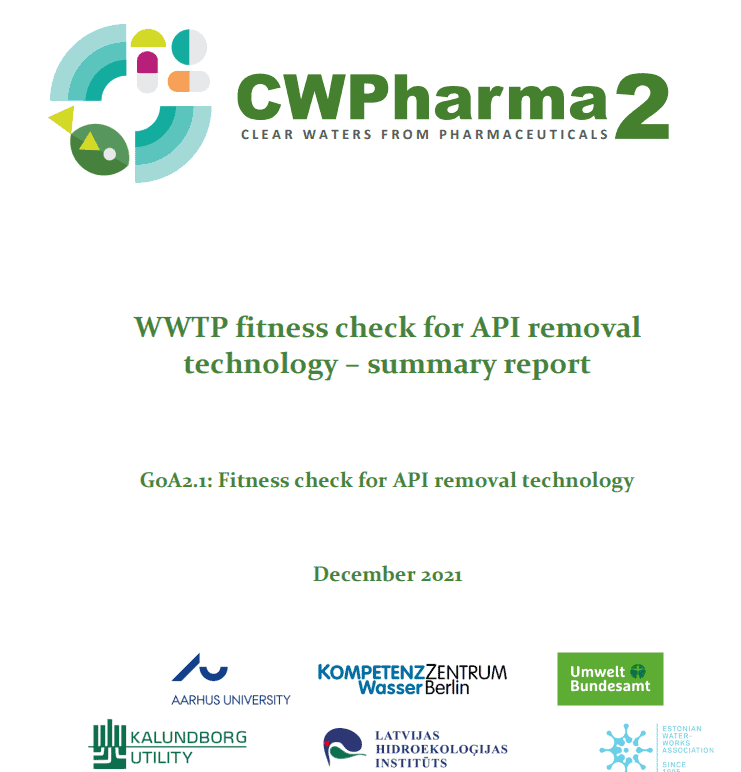CW Pharma 2
Active pharmaceutical ingredients (APIs) are active medicines, e.g. hormones, analgesics and antibiotics, which still reach the Baltic Sea via wastewater treatment plants. Residues of active pharmaceutical ingredients (APIs) contaminate waters of the Baltic Sea and negatively affect the marine space. The residues that risk contaminating a large catchment area of the Baltic Sea have been identified but their impact on the environment requires an in-depth analysis. There are regulations on the EU level that require the countries to set up take-back schemes and disposal of unused medicine. However, on the national level, there is not always a unified approach or strictly obliging regulations that would accelerate actions on tackling the challenge. As an example, consumption data of veterinary APIs in agriculture and aquaculture is limited from Finland and Germany (only antimicrobial drugs) and totally missing from other countries in the Baltic Sea region. In CWPharma 2, water authorities and operators of wastewater treatment plants applied guidelines developed in CWPharma in practice.
Budgets
in numbers
-
0.82MillionTotal
-
0.64MillionErdf
-
0.00MillionEni + Russia
-
0.00MillionNorway
Achievements
The project CWPharma 2 enhanced the knowledge and competence of wastewater treatment plants (WWTPs) operators as well as supervising and permitting authorities from several countries of the Baltic Sea region. The CWPharma 2 partners turned the “Guideline for advanced API removal processes”, developed by the preceding project, into practice, namely through short-term piloting and feasibility studies.
Outcomes
Results of the feasibility studies and showcases for full-scale API removal stages can be used as a blueprint for the evaluation of other WWTPs and, thus, lower barriers to investing in advanced treatment technologies and speed up wide-spread implementation on a full-scale. Thus, WWTP operators and municipalities will have better knowledge on cost-efficient planning, designing and implementation of advanced wastewater treatment stages.
Implementation
Implementation of the guideline in different countries (fitness checks in all Baltic Sea region EU countries, in Denmark, Finland, and Estonia) also serve as fore-runner model and best-practice examples. In addition, direct contact with the WWTP operators for the conduction of the fitness check significantly improved transnational promotion of CWPharma’s outcomes in general. Production and promotion of the information video supported local and national actors (e.g. municipalities, environmental agencies, and NGOsto distribute knowledge on the proper disposal of unused medicine and API emissions into the aquatic environment. The special focus on countries with an identified need for further public awareness measures helped to get the required broad public acceptance necessary for the implementation of relevant API-load reduction measures.
Outputs
Fitness check for pharmaceuticals removal technology in waste water treatment
- - set up targeted sampling campaigns to fill identified data gaps;
- - compare their API concentrations levels to other WWTPs and identify if further actions are needed;
- - make use of potential synergy effects (e.g. existing or planned new infrastructure for other treatment goals).

Applied guideline for piloting and designing of pharmaceuticals (API) removal plants

Project Stories
-
06.05.2021
How to reduce pharmaceutical emissions posing a threat to wildlife in the Baltic Sea?
Active pharmaceutical ingredients are found in our environment at concentrations that pose a risk to wildlife. Pharmaceuticals are used to treat humans and animals, and we cannot stop using them. Instead, the overall consumption of pharmaceuticals tends to increase with an aging population. “We must find applicable solutions to decrease the emissions of pharmaceuticals in the Baltic Sea region, and we need to work together.”, states Noora Perkola, a leading researcher in Finnish Environment Institute and leader of the project “Clear waters from pharmaceuticals” (CWPharma).Read full story
Partners
Aarhus University (AU)
- TownRoskilde
- RegionØstsjælland
- CountryDenmark
- RepresentativeKai Bester
- Phone
- E-Mail
- Web
Berlin Center of Competence for Water (KWB)
- TownBerlin
- RegionBerlin
- CountryGermany
- RepresentativeUlf Miehe
- Phone
- E-Mail
- Web
German Environment Agency (UBA)
- TownBerlin
- RegionBerlin
- CountryGermany
- RepresentativeMarcus Lukas
- Phone
- E-Mail
- Web
Kalundborg Utility (Kalfor)
- TownKalundborg
- RegionVest- og Sydsjælland
- CountryDenmark
- RepresentativeSille Bendix Larsen
- Phone
- E-Mail
- Web
Latvian Institute of Aquatic Ecology, Agency of Daugavpils University (LIAE)
- TownRiga
- RegionRīga
- CountryLatvia
- RepresentativeIeva Putna-Nimane
- Phone
- E-Mail
- Web
Estonian waterworks association (EVEL)
- TownTallinn
- RegionPõhja-Eesti
- CountryEstonia
- RepresentativeMihkel Muulmann
- Phone
- E-Mail
- Web
Institute of Environmental Protection - National Research Institute (IOS)
- TownWarzaw
- RegionMiasto Warszawa
- CountryPoland
- RepresentativeAleksandra Bogusz
- Phone
- E-Mail
- Web
Hillerød Utility (HFORS)
- TownHillerød
- RegionNordsjælland
- CountryDenmark
- RepresentativePeter Underlin
- Phone
- E-Mail
- Web
Helsinki Region Environmental services Authority (HSY)
- TownHelsinki
- RegionHelsinki-Uusimaa
- CountryFinland
- RepresentativePaula Lindell
- Phone
- E-Mail
- Web
-
Project managerKai BesterAarhus University
-
Legal representativeCarsten Suhr JacobsenAarhus University (AU)
-
Financial managerLizi Keinicke ChristensenAarhus Univeristy
-
Communication managerKai BesterAarhus University



